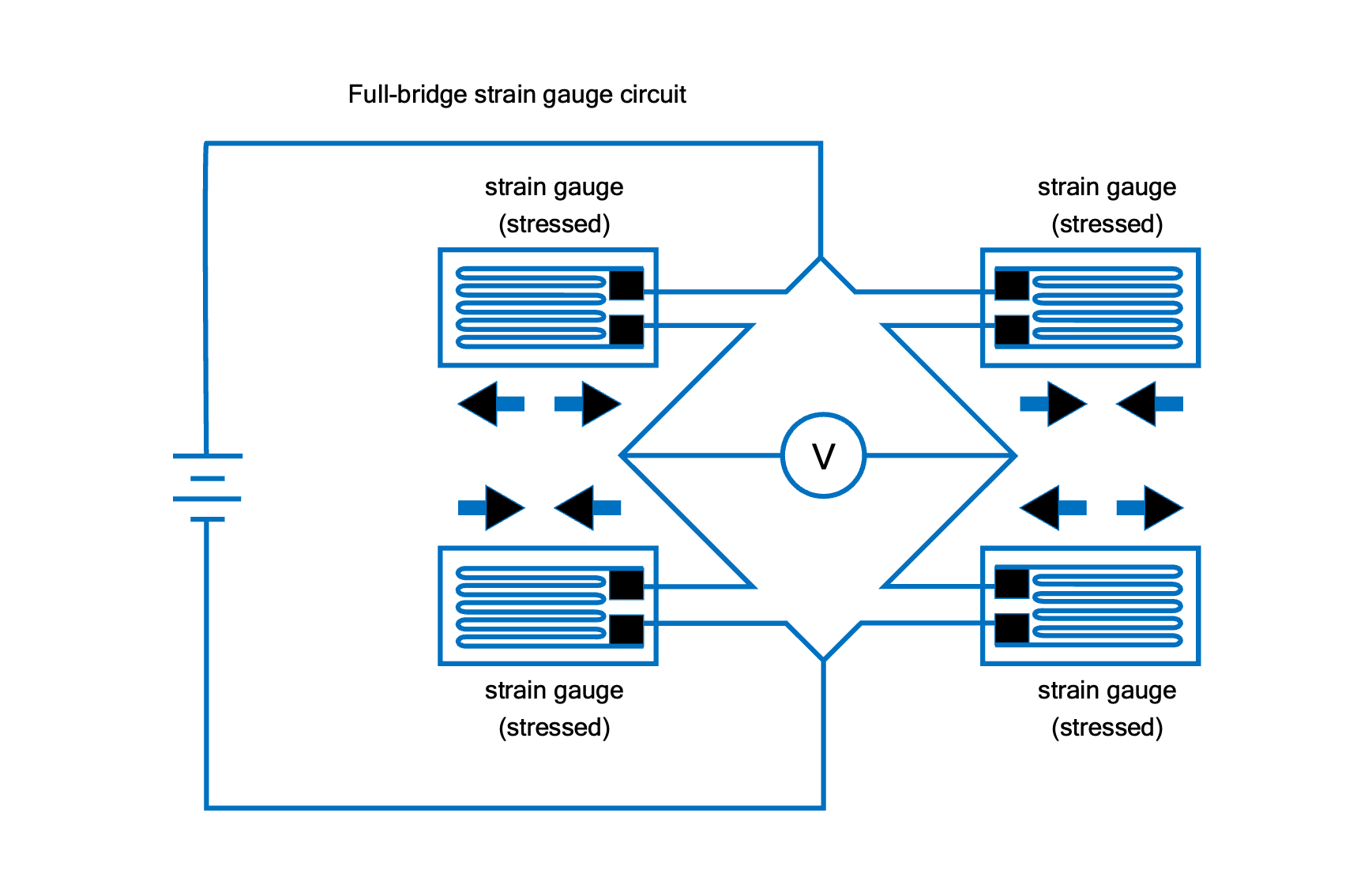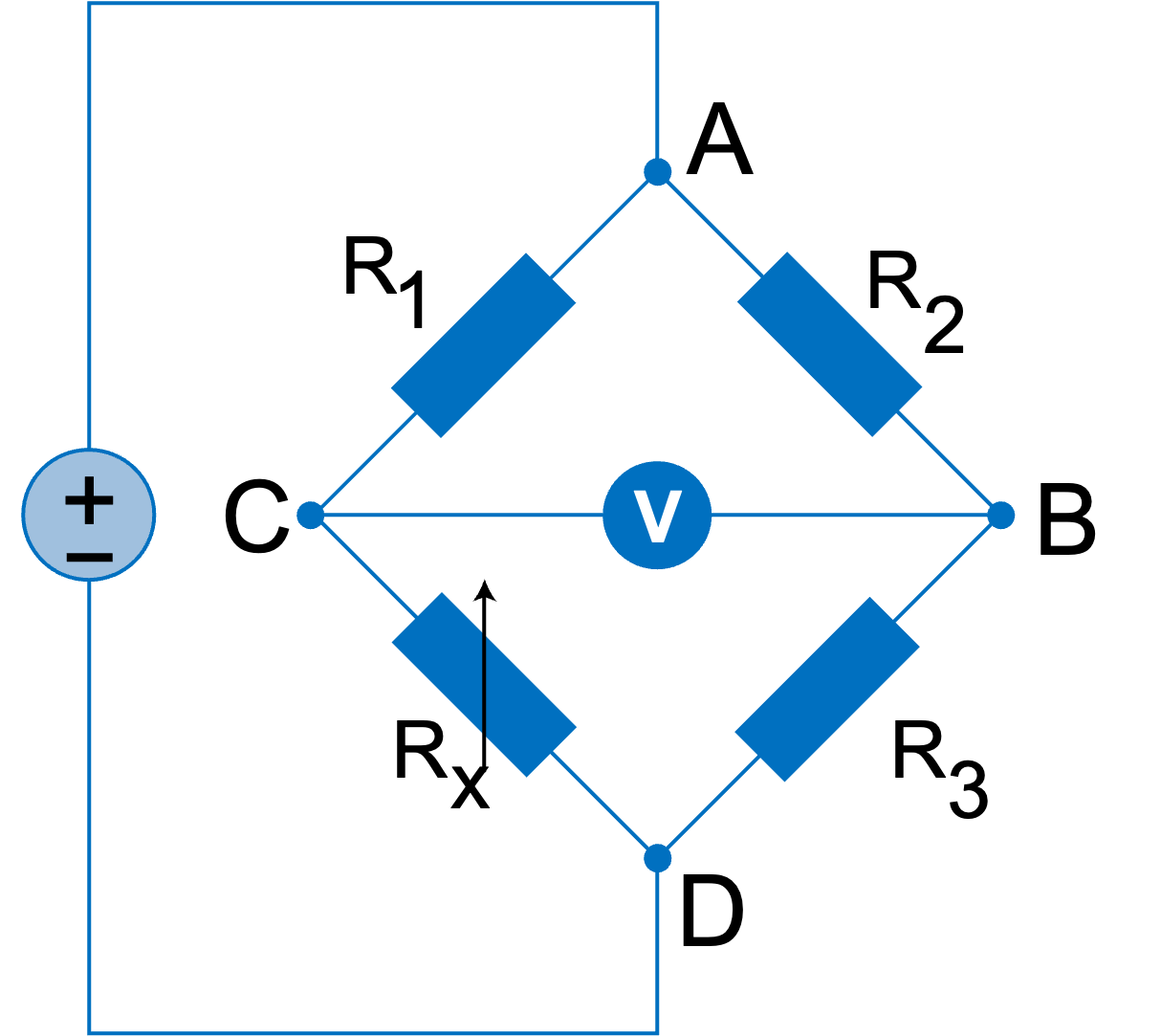How Does A Strain Gauge-Based Load Cell Work?
Load Cell
A load cell is essentially a force transducer or force sensor that converts force into measurable electrical output. Although there are many varieties of force sensors, strain gauge load cells are the most commonly used type. Except for certain laboratories where precision mechanical balances are still used, strain gauge load cells dominate the weighing industry. Pneumatic load cells are sometimes used where intrinsic safety and hygiene are desired, and hydraulic load cells are considered in remote locations, as they do not require a power supply. Strain gauge load cells offer accuracies from within 0.03% to 0.25% full scale and are suitable for almost all industrial applications.
Although gravity is the weakest of the four fundamental forces that keep the universe from flying apart, it is the only one that we can directly perceive. Everything on the earth that has mass experiences it, as the force of gravity pulls it toward the iron core at the center of our planet. Weight and mass are connected by gravity. The world standard unit of measurement of weight is the kilogram (kg). Even in the USA, where imperial measurements of weight, distance, and volume are still in wide public use, those units are referenced to the metric SI system.
So a pound (of weight) in the USA is not defined by another imperial measurement but officially as 0.45359237 kilograms. How we calculate kilogram mass was defined by the world’s scientists in 2019 to reference Planck’s constant, and removed its reference to a physical specimen.
If you remove gravity an object does not literally weigh anything, but its mass remains unchanged. When you weigh something you’re really measuring that object’s mass as it relates to this planet. So in effect, a load cell measures mass. But it is only relevant in terms of what it means here on earth.
There are several basic technologies used within load cells, such as pneumatic load cells (often used in intrinsic safety applications). Hydraulic load cells do not require power and are therefore used frequently in remote, hard-to-access locations. There are also piezoelectric load cells that provide a high-level (yet non-linear) output.
But we will focus on strain gauge-based load cells they are the most prevalent type used in the world today. They are inexpensive, very reliable, and available to handle a wide range of force inputs. They are the de facto standard of the weighing industry and provide full-scale accuracy of 0.25% and better.
While classic mechanical scales use a series of levers to distribute the applied weight and drive a spring connected to a mechanical dial, most of today’s digital models use multiple strain gauge-based load cells to calculate your weight. When you press your foot once on the measuring plate, the microcontroller “wakes up” and performs a zero offset calibration of the strain gauges. The digital display then indicates 0.0 kg (or lbs), and it’s ready for you to step on and weigh yourself. In better digital bathroom scales, a strain gauge-based load cell is placed at each of the four corners of the scale. In fact, they are often built into the “feet” of the scale. Two of the load cells are positioned in tension mode and the other two are positioned in compression mode. When you step onto the scale, the microcontroller takes their outputs and converts them to an aggregate weight value in the selected unit of measurement, and displays that number on a gauge.
Some models even employ a thermocouple to measure the ambient temperature and factor that into the equation, since strain gauges are resistance-based sensors, and are affected by temperature.
How Does A Strain Gauge-based Load Cell Work?
A strain gauge measures strain by means of a change in resistance. A metal foil pattern is mounted onto a flexible substrate, which also serves as an insulator. A current is run through the foil pattern. When the object under test is stressed (i.e., compressed or put under tension) there is a change in resistance which is proportionate to the amount of deflection.
Full bridge strain gauge sensor
When a conductor is stretched, its resistance increases. When it’s compressed, its resistance decreases. This change in resistance can be measured using a Wheatstone bridge, which is four strain gauge sensors arranged in a pattern.
Strain gauge operation (bending exaggerated for clarity)
Wheatstone Bridge Diagram
Measuring with all four sensors you get into a full-bridge configuration. In the full-bridge diagram above, the output voltage of the sensor is measured at C and B, while the excitation voltage is supplied at A and D. So when we mount a strain gauge onto a mechanical housing, and then subject that housing to stress or force, such as weight, the gauge will measure the relative compression or tension caused by that force. The combination of such housing with the strain gauge sensor mounted onto it is a load cell.
Load Cell Measurement Applications
There is virtually an unlimited number of possible applications for load cells, large and small. Here are just a few that come to mind:
Materials testing
measuring the weights of parts as they are manufactured for consistency.Aerospace
testing the thrust of jet engines, measuring the load on wheels and undercarriages.Marine
monitoring the tensions on mooring lines as they stretch under the load of the ship moving with the water.Transportation
torque measurements on electric, gasoline, and diesel engines, axle load monitoring, train and truck wheel loads, measuring cargo weights at a highway weighing stations.Industrial
Force measurements on gearboxes and pumps, tension measurements in undersea pipe-laying applications, tension and force measurements in paper mill and steel mill applications, Hopper and vessel weighing.Medical / Healthcare
Hospital beds that weigh the patient, precision infant and infant incubator scales, load measurements on physical therapy, and exercise equipment.Construction
Cable forces in elevators forces on scaffolding according to international standards.Entertainment
S-type load cells are installed in the middle of cables used to hoist acrobats and actors, ensuring that the forces do not exceed prescribed levels.Petrochemical
measuring the forces on oil and gas drilling tools.Farming and Ranching
Measuring the weight of livestock passing through chutes, measuring forces on cables, and hosting equipment, hopper, tankard, and silo weighing.Household / Consumer
digital bathroom scales.Food & Beverage Industry
In the food and drug industries, load cells are used in manufacturing facilities and on a wide variety of packaging machines, for example; Batch hopper weighing, Food filling machines, Agitators, and High accuracy weighing scales.
When we consider the sheer variety represented by just a dozen or so applications, it is clear that force and weight measurements are similar to temperature measurements in that they are fundamental to tens of thousands of applications across virtually every industry.




